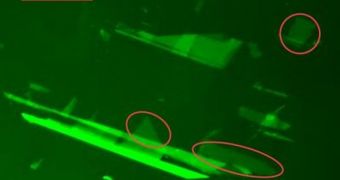Undoubtedly, the electronic circuits that will make up the appliances of the future will be a long way away from the equipment we see today. New materials, new technologies, a combination of organic and inorganic molecules, and a higher degree of miniaturization will change the aspect of circuit boards forever. Efforts around the world today are focused on finding the best-suited, new materials for the job, and a recent investigation by experts at the Physikalisch-Technische Bundesanstalt (PTB), in Germany, seems to show that graphene and gallium arsenide are the winning combination.
This conclusion was reached only five years after graphene was first synthesized. Back in 2004, a team of experts at the University of Manchester discovered this extremely thin carbon compound, which has some peculiar physical, electrical and chemical properties. For the PTB team, the experiments that sought to combine materials in novel ways couldn't have any other ending. Graphene is simply perfect for gallium arsenide, a semiconductor material that supports a wide degree of manipulation and tailoring of its electrical properties.
GA is today the starting point for a very wide range of the world's fastest electrical and opto-electronic circuit components. The German researchers were able to make graphene visible on a GA substrate for the first time, a feat that was until now possible only on a silicon oxide substrate. Because the PTB is a research cooperation especially fitted for precise measurement, the scientists behind the new achievement should have no problem analyzing the electrical properties of their new material. If results are promising, then we may have just witnessed the “birth” of a new component of future electronics.
The original study, entitled “Graphene on Gallium Arsenide: Engineering the visibility,” appears in the latest issue of the scientific journal Applied Physics Letters. The investigators describe how both layers of the new material are visible with a normal light optical microscope, which makes working with graphene easier than ever. Further development options in the manufacture of electrical components from graphene surfaces are now possible without too much effort, the team concludes.

 14 DAY TRIAL //
14 DAY TRIAL //